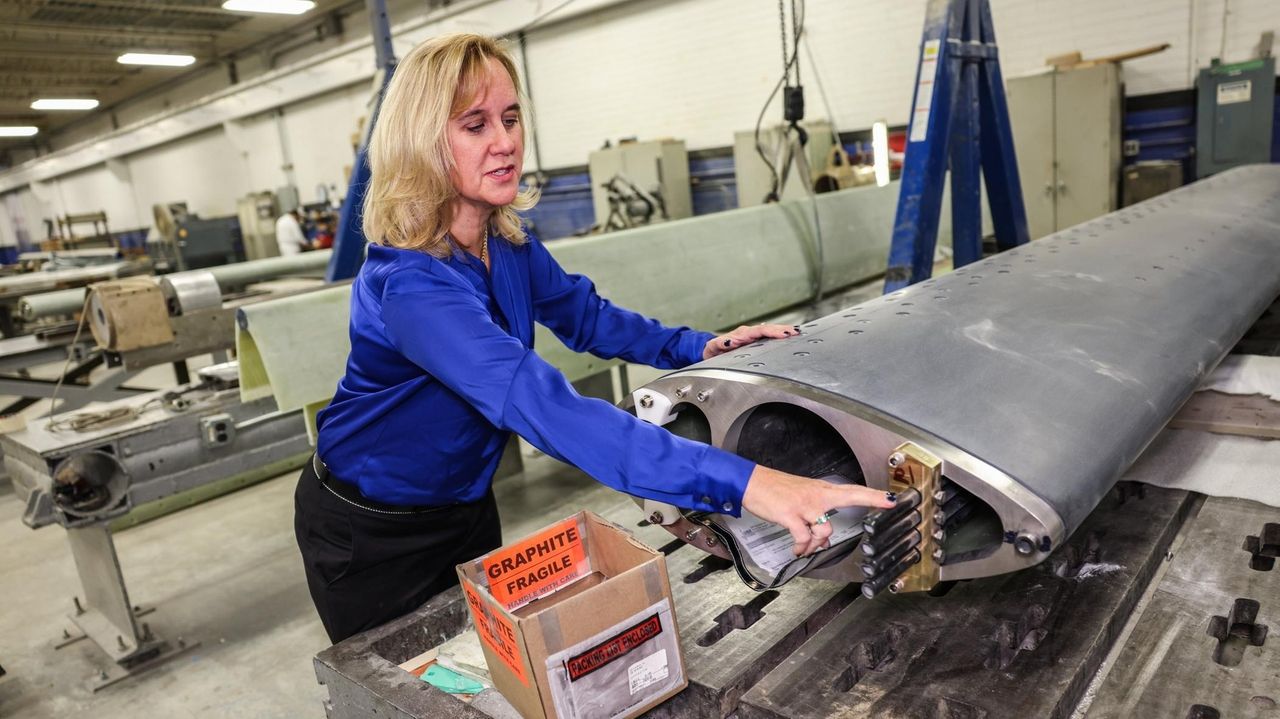Reviving American Manufacturing: The Key to National Resilience and Strength
Manufacturing
2025-04-08 19:57:22Content

In a compelling analysis on 'The Story', nationally syndicated reporter Salena Zito delves into the intricate world of steel industry dynamics, exploring how manufacturers are navigating the complex landscape of Trump-era tariff policies. Her insights reveal the nuanced responses of American steel producers to the administration's bold trade strategies, highlighting the delicate balance between protectionist measures and global economic competition.
Zito's reporting offers a deep dive into how steel industry leaders are adapting to the unprecedented trade approach, examining the potential economic implications and the real-world impact of tariff diplomacy on American manufacturing. Her expert perspective provides viewers with a comprehensive understanding of the intricate economic chess game playing out in one of America's most critical industrial sectors.
Steel Tariffs Unveiled: Trump's Economic Diplomacy Reshaping Global Trade Dynamics
In the intricate landscape of international trade, few policies have sparked as much debate and potential transformation as the steel tariffs implemented during the Trump administration. These economic measures, far more than mere protectionist strategies, represent a bold recalibration of America's industrial and diplomatic approach to global commerce.Navigating the Complex Terrain of Economic Nationalism
The Strategic Rationale Behind Steel Tariffs
The implementation of steel tariffs represents a multifaceted economic strategy that extends far beyond simple trade protection. By imposing targeted tariffs, the Trump administration sought to reinvigorate domestic manufacturing, particularly the struggling steel industry, which had been experiencing significant challenges from international competition. These tariffs were not merely economic instruments but strategic diplomatic tools designed to reshape global trade relationships. Economists and policy analysts have extensively debated the potential implications of these tariffs. The core objective was to create a more level playing field for American manufacturers, who had long complained about unfair competition from international producers, particularly those in countries with lower production costs and different regulatory environments.Global Trade Reactions and Geopolitical Implications
The steel tariffs triggered a complex web of international responses, transforming the global trade landscape. Countries like China, Canada, and members of the European Union found themselves navigating unprecedented economic tensions. These tariffs were not just economic measures but sophisticated diplomatic maneuvers that challenged existing international trade paradigms. Retaliatory measures from affected countries demonstrated the intricate interconnectedness of modern global economics. Each response and counter-response revealed the delicate balance of international trade relationships and the potential long-term consequences of protectionist policies.Domestic Manufacturing Renaissance
Within the United States, the tariffs sparked a nuanced conversation about industrial revitalization. Domestic steel manufacturers saw potential opportunities for growth and increased market share. Small and medium-sized steel producers viewed these policies as a potential lifeline, offering protection against aggressive international competition. The policy's impact extended beyond immediate economic metrics. It represented a philosophical shift in approaching industrial policy, emphasizing domestic production capabilities and challenging the decades-long trend of manufacturing outsourcing.Economic and Political Complexity
The steel tariffs embodied a complex intersection of economic strategy and political messaging. They reflected a broader narrative of economic nationalism, challenging established global trade norms and signaling a more assertive approach to international economic relationships. Detailed economic analyses revealed multifaceted consequences. While some sectors benefited directly, others experienced increased production costs and potential market disruptions. The policy's true impact would only become fully apparent through long-term economic observation and analysis.Technological and Innovation Considerations
Beyond immediate economic implications, the tariffs potentially stimulated domestic technological innovation. By creating a more protected market environment, the policy might encourage American steel manufacturers to invest in advanced production technologies and more efficient manufacturing processes. This approach suggested a strategic vision extending beyond immediate economic protection, potentially positioning the United States as a leader in advanced manufacturing technologies and sustainable industrial practices.RELATED NEWS
Manufacturing

Obesity Drug Manufacturing Breakthrough: Viking Pharma Invests $150 Million in CordenPharma Partnership
2025-03-11 14:25:00
Manufacturing

Manufacturing Revolution: Cognizant Clinches Groundbreaking Global Tech Transformation
2025-04-08 14:00:00
Manufacturing

Economic Defiance: China's Manufacturing Surge Outpaces US Trade Pressure
2025-03-31 04:09:22





